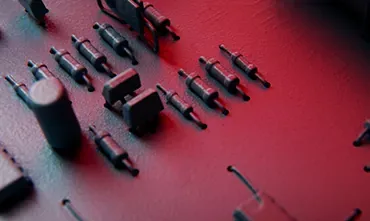A Passive Var Compensator is a device (mainly capacitor banks and reactors) used to provide reactive power compensation and improve power factor in electrical systems.
High End Passive Var Compensator
High-End Passive Var Compensators – Stable Power. Optimized Performance.
The PurityElec High-End Passive Var Compensator (PVC) is designed to provide reliable, maintenance-free reactive power compensation for industrial, commercial, and utility-scale applications. By balancing power factor and reducing reactive currents, it helps you improve energy efficiency, enhance system stability, and cut operational costs.

Key Features
• High Power Factor Correction – Delivers precise reactive power compensation for improved system efficiency.
• Rugged Passive Design – No moving parts or complex electronics, ensuring long service life with minimal maintenance.
• Wide Capacity Range – Available in configurations suitable for low, medium, and high voltage networks.
• Harmonic Resilience – Designed to withstand non-linear loads and operate in environments with moderate harmonic distortion.
• Custom-Built Options – Tailored solutions for your specific voltage, frequency, and load conditions.
Applications
• Heavy industrial facilities (steel, cement, manufacturing)
• Commercial buildings & complexes
• Renewable energy integration (solar & wind farms)
• Utility substations
• Railway & transportation power systems
| Technical Specifications | |
|---|---|
| Rated Voltage | 400V – 33kV |
| Reactive Power Range | 50kVar – 5000kVar |
| Frequency | 50Hz / 60Hz |
| Cooling | Natural air-cooled |
| Enclosure Protection | IP31–IP55 (indoor/outdoor models) |
| Compliance | IEC 60871, IEC 61921 |
Benefits of Choosing PurityElec PVC
✔ Reduce electricity bills by improving power factor
✔ Protect transformers, generators, and cables from overloading
✔ Lower system losses and heat generation
✔ Increase available capacity for additional loads
✔ Reliable operation with zero electronic failures
Frequently Asked Questions
-
Q1. What is a Passive Var Compensator (PVC)?
-
Q2. What does “High-End” mean in Passive Var Compensators?High-end PVCs are designed with advanced features such as:
- • Detuned filters for harmonic-rich environments
- • Automatic switching (APFC panels)
- • High-reliability capacitors and reactors
- • Modular, heavy-duty designs suitable for continuous industrial operations
-
Q3. Why is reactive power compensation important?Because low power factor leads to higher demand charges, voltage drops, overheating of equipment, and reduced system capacity. PVCs correct power factor by supplying reactive power locally.
-
Q4. Why do we need passive compensators if active solutions exist?Passive compensators are:
- • Cost-effective for stable and steady loads
- • Simple in design and maintenance-free
- • Highly reliable with long service life
-
Q5. Do passive Var compensators work in the presence of harmonics?Standard capacitor banks may cause resonance issues with harmonics. That’s why high-end PVCs use detuned reactors (tuned below the 5th harmonic) to avoid amplification of harmonic currents.
-
Q6. What are detuned capacitor banks?Detuned banks are capacitor banks connected in series with reactors, ensuring safe operation in harmonic environments and preventing resonance with the grid.
-
Q7. What are the typical configurations of PVCs?
- • Fixed capacitor banks
- • Automatic Power Factor Correction (APFC) panels
- • Detuned/tuned capacitor banks with reactors
- • Hybrid banks (passive + active filters for better performance)
-
Q8. Can PVCs improve voltage stability?Yes. By supplying reactive power locally, PVCs reduce voltage drops, especially in long distribution feeders and large industrial setups.
-
Q9. What standards are followed for PVC design?
- • IEC 60831 (Shunt capacitors for power factor correction)
- • IEC 61642 (Harmonic filters)
- • IEEE 519 (Harmonic control standards)
- • IS 13585 (Indian Standards for capacitors)
-
Q10. What power factor level can PVCs achieve?Generally up to 0.95–0.99 lagging, depending on load profile and sizing.
-
Q11. What are the benefits of high-end PVCs?
- • Reduced electricity bills (avoid PF penalties)
- • Increased capacity of transformers and cables
- • Improved system voltage and stability
- • Reliable, maintenance-free operation
- • Long lifespan compared to active systems
-
Q12. Where are PVCs typically installed?
- • Steel plants, cement industries, textile mills
- • HVAC and large commercial complexes
- • Data centers and IT parks (with detuned solutions)
- • Renewable energy plants (solar/wind integration points)

